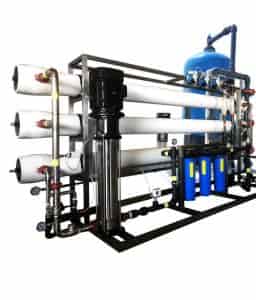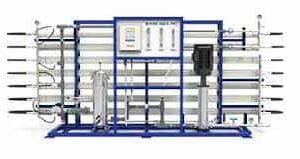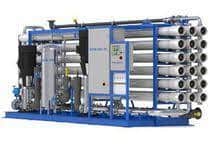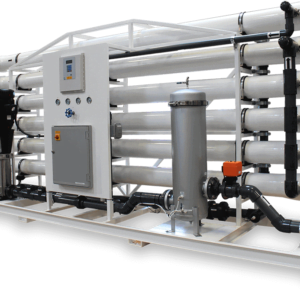Brackish Water RO
Buy on whatsappDescription
Brackish water, a mix of seawater and freshwater, is a valuable but challenging resource due to its high salinity. To overcome this hurdle, Brackish Water Reverse Osmosis (RO) systems have emerged as a leading solution for desalination and water treatment. In this article, we will explore the advantages, operation, and applications of Brackish Water RO systems.
Advantages of Brackish Water RO Systems
Brackish Water RO systems offer several advantages in treating and desalinating brackish water:
- High Salt Rejection: RO membranes used in these systems are specifically designed to remove salts and impurities from brackish water. They effectively reject a high percentage of dissolved solids, ensuring a significant reduction in salinity.
- Energy Efficiency: Brackish Water RO systems have improved energy efficiency compared to traditional desalination methods. Advanced technologies, such as energy recovery devices, help minimize energy consumption, making RO an economically viable option.
- Flexible Operation: RO systems can be tailored to meet different brackish water treatment needs. They offer adjustable recovery rates, allowing operators to optimize water production while maintaining desired water quality.
- Compact Footprint: Brackish Water RO systems are compact and require less space than other water treatment technologies. This advantage makes them suitable for both centralized and decentralized water treatment facilities.
Operation of Brackish Water RO Systems
Understanding the basic operation of Brackish Water RO systems is crucial for their effective implementation. Here’s a simplified overview:
- Pre-Treatment: Brackish water undergoes pre-treatment processes, including filtration to remove large particles, sedimentation to settle suspended solids, and disinfection to kill microorganisms.
- Pressure Application: The pre-treated water is pressurized and fed into the RO system. The applied pressure helps overcome osmotic pressure, forcing water molecules through the RO membrane while retaining dissolved salts and other impurities.
- Membrane Separation: Inside the RO system, semipermeable membranes selectively allow water molecules to pass through while rejecting salts and other contaminants. The separated purified water, known as permeate, is collected, while the concentrated brine is discharged.
- Post-Treatment: The permeate may undergo additional treatment, such as remineralization or disinfection, to meet specific water quality requirements before distribution or use.
Applications of Brackish Water RO Systems
Brackish Water RO systems find extensive applications across various industries and sectors:
- Drinking Water: Brackish Water RO systems play a crucial role in providing safe and clean drinking water in regions with limited freshwater resources. They remove contaminants and salinity, ensuring potable water supply.
- Agriculture: RO systems help treat brackish water for irrigation purposes. By removing salts and harmful substances, they prevent soil degradation and ensure optimal crop growth in water-scarce areas.
- Industrial Processes: Many industries require high-quality water for their processes. Brackish Water RO systems provide a reliable source of purified water for industrial use, such as in power plants, pharmaceutical manufacturing, food and beverage production, and more.
- Aquaculture: Brackish Water RO systems support the aquaculture industry by providing the appropriate water conditions for breeding, hatching, and rearing various species of marine and freshwater organisms.
- Residential and Commercial Applications: Brackish Water RO systems are also employed in residential and commercial settings for producing clean drinking water, improving water quality, and reducing the reliance on bottled water.
In conclusion, Brackish Water Reverse Osmosis (RO) systems offer significant advantages, efficient operation, and versatile applications for treating brackish water. Their ability to remove salts, compact design, and adaptability make them a preferred choice across various industries. By harnessing the power of RO technology, we can make brackish water a valuable and accessible resource while addressing the challenges of water scarcity and salinity.





